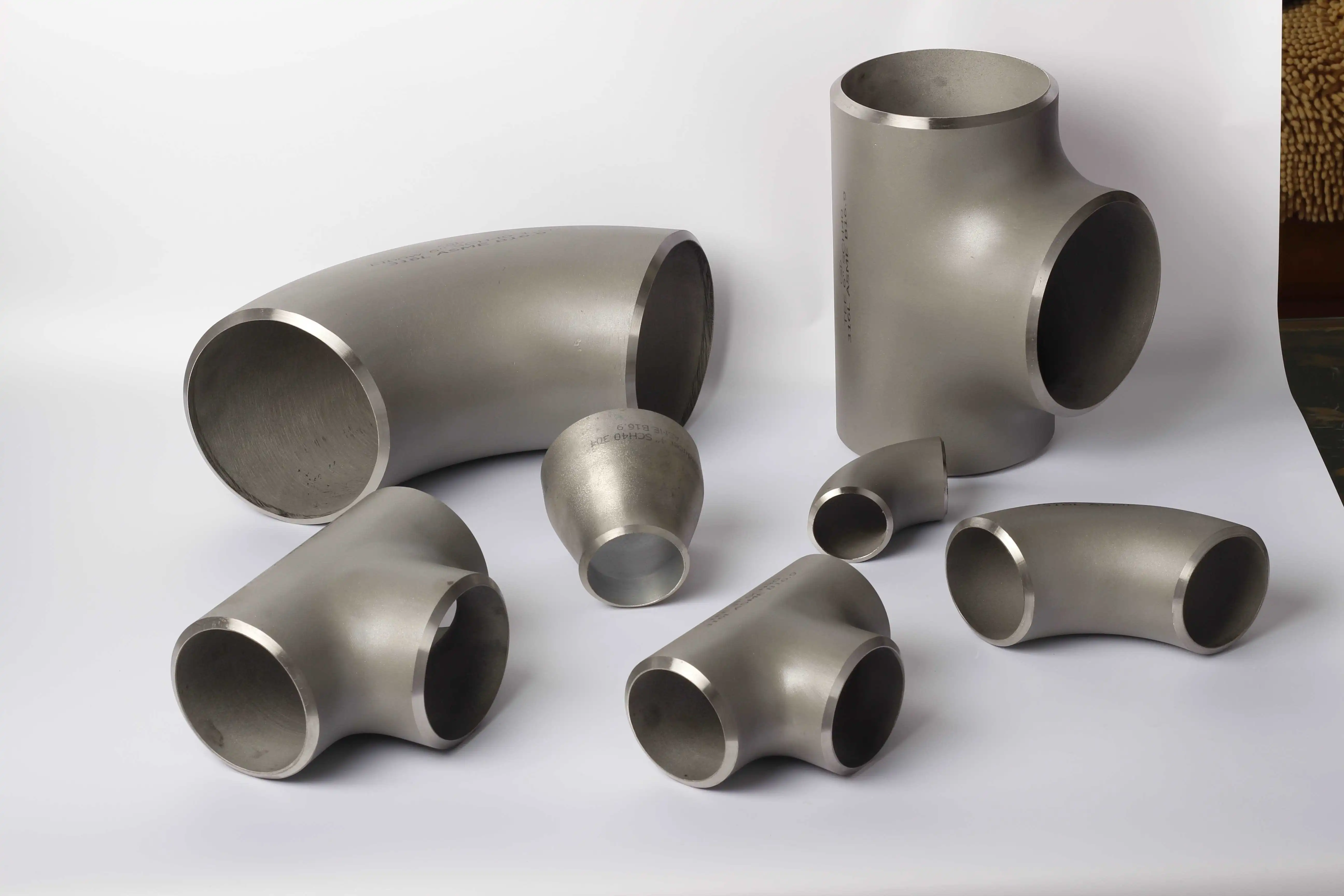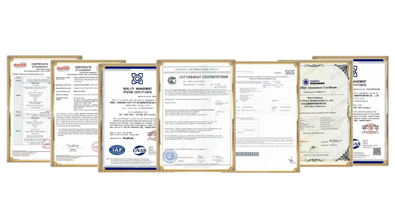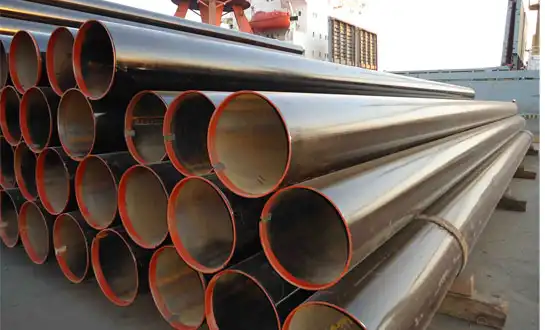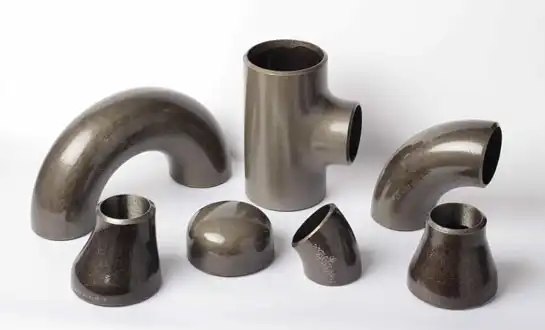The Vital Role of Pipe Fittings in Various Industries
Pipe fittings serve as indispensable components across diverse industrial sectors, enabling the seamless transport of fluids, gases, and materials through complex distribution networks that power modern civilization. These industrial pipe components form the critical connections that transform individual pipes into comprehensive systems capable of handling everything from potable water delivery to high-pressure chemical processing applications. The strategic placement and selection of appropriate fittings directly influence system efficiency, operational safety, and maintenance requirements across industries ranging from oil and gas to pharmaceuticals and municipal infrastructure. Understanding the vital role these industrial pipe components play helps engineers optimize system design while ensuring compliance with safety standards and environmental regulations that govern industrial operations worldwide.
Critical Applications Across Major Industrial Sectors
Oil and Gas Industry Infrastructure Requirements
The oil and gas sector relies heavily on specialized industrial pipe components to maintain safe and efficient operations throughout exploration, production, refining, and distribution processes. High-pressure applications in upstream operations require robust fittings capable of withstanding extreme pressures exceeding 10,000 PSI while maintaining leak-tight integrity in harsh environmental conditions. Carbon steel elbows, tees, and reducers with certified strength and performance characteristics ensure reliable flow control and system safety in critical applications where failure could result in catastrophic consequences. These industrial pipe components must demonstrate exceptional resistance to hydrogen sulfide corrosion, temperature cycling, and mechanical stress that characterize petroleum processing environments. The smooth interior surfaces and clean external finishes of quality fittings minimize pressure drops and facilitate inspection procedures essential for regulatory compliance and operational safety in this demanding sector.

Chemical Processing and Petrochemical Applications
Chemical processing facilities demand industrial pipe components that combine structural integrity with chemical compatibility to handle corrosive media and extreme operating conditions safely. The selection of appropriate fitting materials and protective coatings ensures long-term reliability when transporting acids, bases, solvents, and other reactive chemicals that could compromise standard materials. Buttweld carbon steel fittings with specialized linings or coatings provide the necessary chemical resistance while maintaining the mechanical strength required for high-pressure applications. These industrial pipe components must accommodate thermal expansion and contraction cycles associated with heating and cooling processes common in chemical manufacturing operations. The precision manufacturing and quality control procedures ensure that fittings maintain dimensional stability and sealing effectiveness throughout repeated thermal cycling and exposure to aggressive chemical environments.
Power Generation and Utility Systems
Power generation facilities utilize industrial pipe components in critical applications including steam distribution, cooling water systems, and fuel handling networks that require exceptional reliability and performance. Steam systems operating at temperatures exceeding 1000°F and pressures above 2000 PSI demand fittings with superior creep resistance and thermal fatigue properties to maintain system integrity throughout extended operating periods. The design requirements for these industrial pipe components include provisions for thermal expansion, vibration resistance, and accessibility for routine maintenance and inspection procedures. Nuclear power applications impose additional requirements for material traceability, quality documentation, and performance verification that ensure compliance with stringent safety regulations. The manufacturing processes for these specialized industrial pipe components incorporate enhanced quality control measures and testing procedures that validate performance under the extreme conditions characteristic of power generation environments.
Engineering Design Considerations and Performance Standards
Structural Integrity and Load Distribution Analysis
The engineering design of industrial pipe components requires comprehensive analysis of stress distribution, fatigue resistance, and failure modes to ensure reliable performance under varying load conditions. Finite element analysis techniques evaluate stress concentrations at geometric transitions and connection points, enabling optimization of fitting designs that minimize weak points and extend service life. The wall thickness distribution and reinforcement patterns in elbows, tees, and reducers must account for internal pressure loads, external forces, and thermal stresses that occur during normal operation. These industrial pipe components are designed with appropriate safety factors that account for material property variations, manufacturing tolerances, and service degradation over time. Advanced manufacturing techniques ensure consistent material properties and dimensional accuracy throughout the fitting geometry, eliminating potential failure points that could compromise system reliability in critical applications.
Flow Dynamics and Hydraulic Performance Optimization
The internal geometry of industrial pipe components significantly influences flow patterns, pressure losses, and overall system efficiency in fluid transport applications. Computational fluid dynamics modeling enables engineers to optimize fitting contours that minimize turbulence, reduce energy consumption, and prevent erosion or cavitation damage in high-velocity applications. The transition profiles in reducers and the curvature radii in elbows are carefully engineered to maintain smooth flow conditions while minimizing pressure drop across these industrial pipe components. Flow separation and secondary circulation patterns can create operational problems including noise, vibration, and accelerated wear that compromise system performance and component longevity. Manufacturing precision ensures that the internal surfaces of industrial pipe components conform to design specifications that optimize hydraulic performance while maintaining structural integrity under operating pressures.
Material Selection and Environmental Compatibility
The selection of appropriate materials for industrial pipe components requires evaluation of mechanical properties, corrosion resistance, and environmental compatibility to ensure long-term performance in specific service conditions. Carbon steel compositions are optimized to provide the necessary strength, ductility, and weldability while maintaining cost-effectiveness for widespread industrial applications. Heat treatment processes normalize material microstructure and relieve manufacturing stresses, ensuring consistent performance of industrial pipe components under cyclic loading and thermal exposure. Environmental factors including temperature extremes, chemical exposure, and atmospheric conditions influence material degradation mechanisms that must be considered during the design and specification process. Quality assurance programs verify that material properties meet specified requirements and maintain consistency across different production batches of these critical industrial pipe components.
Quality Assurance and Regulatory Compliance Standards
International Standards and Certification Requirements
Industrial pipe components must comply with rigorous international standards that ensure dimensional consistency, performance reliability, and safety across global markets and applications. Standards such as ASME B16.9, EN 10253, and JIS B2313 specify critical requirements for materials, manufacturing processes, dimensions, and testing procedures that govern fitting production and quality control. Certification programs provide independent verification that industrial pipe components meet specified performance criteria and maintain quality consistency across different suppliers and production facilities. The documentation requirements for certified fittings support traceability programs and quality assurance systems that enable effective procurement and project management. Regular auditing of manufacturing facilities ensures continued compliance with applicable standards and maintains confidence in the performance of industrial pipe components in critical infrastructure applications.
Testing Procedures and Performance Validation
Comprehensive testing programs validate the performance characteristics of industrial pipe components under conditions that simulate actual service environments and loading scenarios. Hydrostatic pressure testing confirms structural integrity under specified test pressures that exceed normal operating conditions, ensuring adequate safety margins for critical applications. Material testing procedures verify chemical composition, mechanical properties, and microstructural characteristics that determine the performance capabilities of industrial pipe components in service. Non-destructive testing methods including radiographic examination, ultrasonic inspection, and magnetic particle testing detect manufacturing defects that could compromise component reliability. Long-term performance testing evaluates the durability and reliability of industrial pipe components under accelerated aging conditions that simulate years of service in typical industrial environments.
Quality Control Systems and Documentation Requirements
Manufacturing quality control systems ensure that industrial pipe components meet specified requirements through systematic monitoring and verification procedures at each production stage. Statistical process control methods track dimensional accuracy, material properties, and surface quality parameters to maintain consistency and identify potential problems before they affect product quality. Inspection procedures verify that finished industrial pipe components conform to drawing specifications, standard tolerances, and customer requirements before shipment and installation. Documentation systems maintain complete records of material certifications, manufacturing processes, inspection results, and test data that support traceability and quality assurance programs. These comprehensive quality control measures ensure that industrial pipe components deliver reliable performance and meet the stringent requirements of critical industrial applications.
Conclusion
Industrial pipe components play essential roles across diverse sectors by enabling safe, efficient fluid transport systems that support modern industrial operations. The successful integration of quality fittings with appropriate design, manufacturing, and installation practices ensures reliable infrastructure performance while meeting stringent safety and environmental requirements that govern industrial operations worldwide.
HEBEI RAYOUNG PIPELINE: Leading Industrial Pipe Components Manufacturers
Excellence in industrial infrastructure begins with HEBEI RAYOUNG PIPELINE TECHNOLOGY CO., LTD., where dependable materials meet cutting-edge engineering solutions. As premier manufacturers of industrial pipe components, we deliver buttweld carbon steel elbows, tees, reducers, and flanges that exceed performance expectations across diverse industrial sectors. Our comprehensive product lineup provides solutions for every design requirement, from straight-line configurations to complex angular connections, featuring smooth interiors, clean surfaces, and certified strength that stands the test of time. With ISO 9001:2015 certification, GOST-R export compliance, and consistent quality serving global markets from residential buildings to industrial plants, we understand that superior infrastructure starts with reliable components. Ready to transform your next industrial project? Connect with our expert team at info@hb-steel.com for innovative solutions and responsive support that delivers lasting value!
References
1. Thompson, R.K. and Davis, M.J. "Industrial Pipe Fittings: Applications and Performance in Critical Infrastructure." Industrial Engineering Review, Vol. 44, 2020.
2. Anderson, L.P. "The Role of Pipe Components in Modern Industrial Systems Design." Process Engineering Quarterly, Issue 16, 2019.
3. Wilson, C.R. et al. "Quality Standards and Testing Requirements for Industrial Pipe Fittings." International Standards Journal, Vol. 38, 2021.
4. Brown, S.M. and Martinez, D.L. "Material Selection Guidelines for Industrial Pipe Component Applications." Materials Engineering Review, Vol. 29, 2020.
5. Johnson, P.A. "Performance Evaluation of Carbon Steel Fittings in Industrial Processing." Chemical Engineering Magazine, Vol. 52, 2019.
6. Miller, K.R. "Design Considerations for Industrial Pipe Systems and Component Integration." Mechanical Systems Engineering, Vol. 41, 2021.

Need a quote? Want to see samples? Just say hello. We’re friendly. We’re fast. And we’re ready when you are.

Welcome to RAYOUNG – Strong Pipes, Stronger Promise




